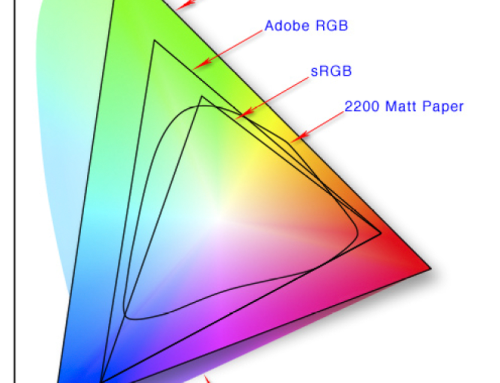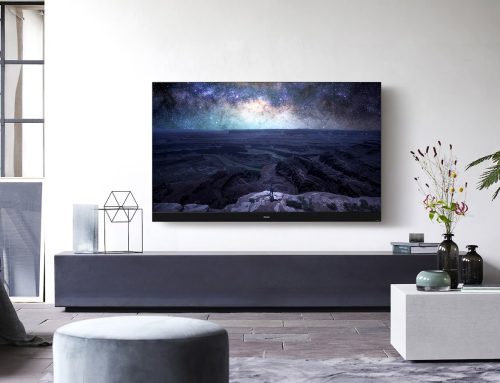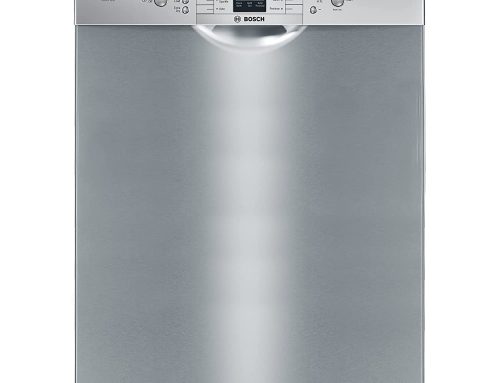Since the invention of the TV, we have become accustomed to its many functions. Whether you are looking for a new TV or want to upgrade your existing one, the size, position, resolution, and viewing distance of your TV are all important factors that will help you choose the right one for your bedroom. Aside from the screen’s size, the position of the TV and the viewing angle is also taken into account to see how they will enhance your viewing comfort. This article will guide you in finding the best tv size for the bedroom.
Choosing the Best TV size for the bedroom:

Viewing distance is a factor to be considered when choosing the best tv size for the bedroom. The viewing distance is the measurement between where you would be sitting and where the TV would be. The viewing distance divided by 2.5 feet, gives you the best diagonal measurement. For distance, less than 4 feet, 45 inches, or 55-inch, are the best. If above 8 feet go for the 65-inch TV
Screen size: The screen size of a TV is usually diagonal of the screen. The screen/panel sizes available in the market vary from 28 inches to 96 inches. The correct size of the panel can be chosen as per the dimension of the room where the TV is kept and also on the viewing distance. If you find it difficult to choose the right size, the guidelines in https://best-tv-size-for-bedroom/ might come in handy. The size of a TV is directly proportional to the number of its pixels.
Types of TV screens:
Flat-screen and curved screens are the types of screens available in the market these days.
Resolution: Standard, HD, Full HD, and Ultra HD(UHD) also known as 4k are the different resolutions available for TV these days. The resolution of a television is the number of pixels needed to reproduce the image. The FULL HD Televisions have a resolution of 1920X1080. If you’re looking for something a bit more expensive, though, you might want to consider a 4K or UltraHD TV. These are high-end models that have native resolutions of 4K or higher.
TV stand size: While the process of choosing a stand for a TV is similar to choosing a new model, there are some factors that you should consider. One of these is the resolution. Measure the room in which you want your TV. Then, find the ideal shape and materials that best suit your bedroom TV. You could also explore the various colors and styles of TV stands to find the one that best fits your bedroom.
TV position: You would prefer the TV to be wall-mounted or placed on a stand. Some may prefer to keep it across the bed, some on a side wall or even above the firewall.
Wall-mounted: The height recommendations for a wall-mounted TV are set depending on the type of seating arrangement and the individual preferences of the viewers. In most cases, the TV should be mounted with vertical and horizontal lines centered at eye level. Also, different models have their viewing angle specifications, which allow you to see the TV from different angles.
On Stand: A fancy console table or an exclusive TV cabinet can be an option if you have a spacious bedroom.
Find out the viewing distance: How can you determine the viewing distance? Viewing distance is the distance between your TV screen and the place where you would be sitting and watching the TV. For a comfortable viewing experience, you need to consider and balance the best TV size, the best resolution, and the best viewing distance. The TV should be chosen as per the viewing distance. To big TV in a small space and a very small TV in a huge space are both uncomfortable.
How far should you be from the screen: the viewing distance varies depending on the size of the TV. To find out the ideal distance, use a TV distance calculator. Eye care professionals recommend that individuals sit at least 8 to 10 feet away from the screen to ensure that their eyes are properly protected. The best way to determine the ideal viewing distance is to use the field of view.
Types of TVs:
The rapid evolution of technology has greatly changed the way we watch TV over the past few decades. There are now various types of TV that are available. While your preference and needs are the main factors that will affect your decision.
1) QLED displays: QLED displays are made from tiny quantum dots, which dramatically improve the brightness and color of the TV screens. Although they have better contrast ratios. QLEDs are more affordable. QLED TVs are also more durable and can last longer than OLEDs.
2) OLED displays: An organic light-emitting diode, which is commonly referred to as an OLED display, is composed of a compound that can emit light when electricity is used. This organic compound is placed between two electrodes. Unlike LCDs, organic light-emitting materials (OLEDs) do not require backlighting. They can display deeper blacks and greater contrast ratios. They are lighter and thinner than traditional LCDs. Also, unlike traditional TV filter layers are not required.
3) LED TV: An LED TV uses light-emitting diodes instead of traditional cold cathode fluorescent lights. Although this technology has been around for a while, it’s still very popular.
4) LCD TV: These types of screens have numerous crystal molecules that are arranged in a way that prevents light from entering the screen. When an electric field is applied to a liquid crystal, the crystals rotate to a degree that’s dependent on the amount of light that passes through it. This allows an image to be viewed through a screen.
Top TV brands in India
All the leading brands are offering the best quality TVs with high-quality resolution and optimal performance. Sony, LG, Samsung, Mi Tv, Oneplus, and Toshiba are the few best brands of TV available in India. Each brand offers a neck-to-neck competition in providing the best facilities and services.
Sony Bravia OLED TV: This TV features a voice control system, which allows you to control your favorite shows and movies just by saying “Hi”. 5000 apps are more than any other smart TV, and it comes with a variety of speakers, making it ideal for music, movies, and sports. It has unique Motionflow-XR technology that ensures that the action sequences are smooth and cinematic.
Samsung 4K UHD LED TV: This TV features a Quantum Dot technology that gives it the finest picture quality. It’s designed to bring out every detail and contrast in the images. Samsung is known for its smart televisions, and this model is no different.
Toshiba Vidaa 4K TV: The Toshiba brand has been around for over 68 years, and it is regarded as one of the best televisions in India. With VIDAA’s 4K TV, you can enjoy the best possible viewing experience at home. This TV features a variety of features and functions, making it an ideal choice for home entertainment.
These are the three best options available when compared to their competitors.
Colour Gamut:
The color gamut refers to the range of colors that can be reproduced by an output device. Every screen will have varying levels of saturation, brightness, gloss, and hue. What we perceive as red, blue, or yellow is influenced by how light is reflected in our eyes. The different colors that can be represented by different screens are also influenced by how they reproduce and show them. Most devices will only produce a limited number of colors. Each device has specific color standards that it can follow, this is the color gamut of the particular TV screen.
OLED Vs mini LED
Unlike LED, OLED is a self-emitting technology that allows each pixel to its light source. This allows for total control over both brightness and contrast. While Mini LED is designed to improve backlighting in LCD TVs, it works a bit differently than OLED. Both Mini-LED and OLED are premium technologies, they are ideal for high-end systems. While both promise better contrast, Mini-LED has more reliability. OLED has good contrast and performance, but it has a shorter lifespan.
Best tv size for the master bedroom:
If you have a standard-sized bedroom, a 40- to 55-inch TV may be enough to provide a comfortable viewing experience. Master bedrooms may also be equipped with a larger 70 to 85-inch TV if they are massive and elaborate. Choosing the best tv size for bedroom is always a balance of external factors and comfort.
Conclusion
Your happiness, sobs, and anger are all dealt with in your bedroom. Any accessory you put in there should bring you happiness and comfort. So if planning to bring a TV into your bedroom you should make sure it adds to your pleasure and happiness. A TV placed at the wrong elevation and absurd angle will cause physical discomfort in the long run. One should always be careful to select the right size of TV for the bedroom and also to select a tv with the best features and resolution for optimal viewing comfort.





Leave A Comment